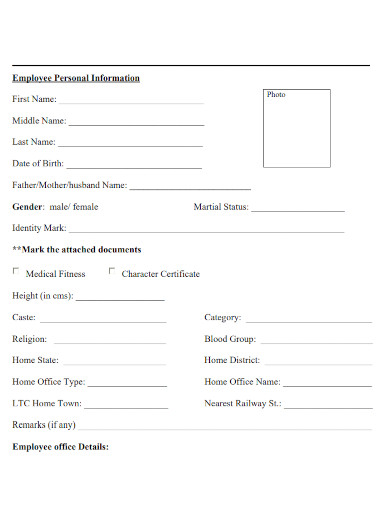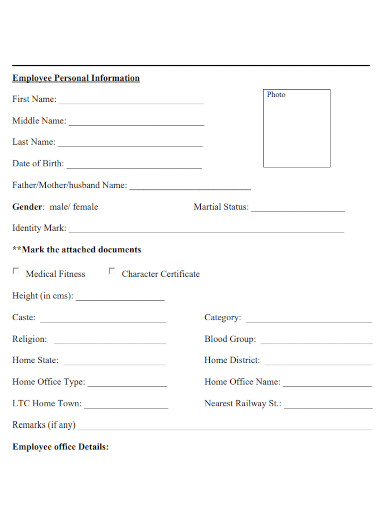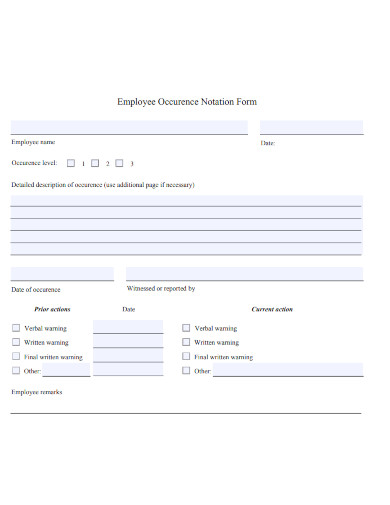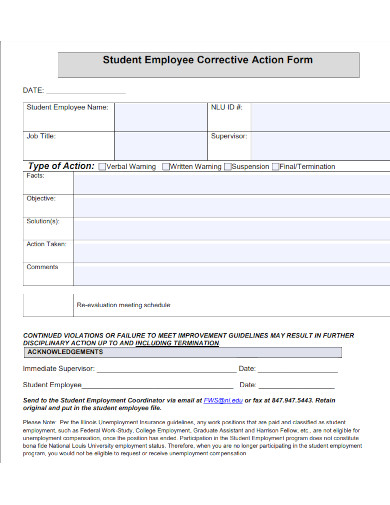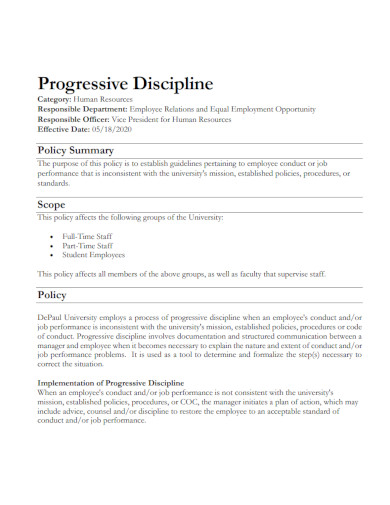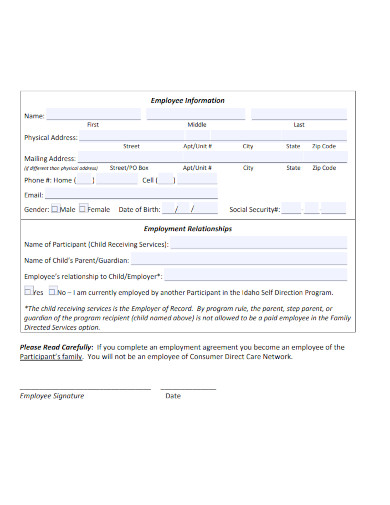Nobody likes it when they have to write up an employee, and it’s certainly not their first option. Written warnings are frequently a sign that initial disciplinary processes have ended and that an employee is on the verge of dismissal. You’ve probably spent a lot of time and effort trying to help them change, with little or no success. It can be daunting to escalate things “officially,” but it’s also an opportunity. A written warning leaves a paper record and gives staff a structured way to get things back in order.
6+ Employee Write-Up Form Samples
An employee write-up is a formal document sent to team members who violate your company’s internal management regulations and procedures. After several incidences, employees usually receive written warnings and verbal warnings from management. When writing a report, it’s common to utilize a standardized form to define the type of behavior, possible repercussions, and improvement strategies. Part of your job as a supervisor is to ensure that your staff adheres to strong behavioral standards. If a member of your team fails to fulfill expectations or violates business policy, it’s critical to document the situation and alert them of the potential consequences.
1. Employee Write-Up Form
2. Employee Write-Up Information Form
3. Employee Disciplinary Write-Up Form
4. Employee Write-up Occurence Notation Form
5. Employee Write-up Corrective Action Form
6. Employee Progressive Discipline Write-Up Form
7. Employee Write-Up Data Form
Basic Guide for an Employee Write-Up
Use these guidelines as a starting point for writing up a team member:
Consider the situation objectively
Consider the circumstances before giving a warning and be sure it justifies an official warning. If you’re upset or frustrated, put off writing the report until you’re relaxed and can think rationally and objectively about the situation. Allowing yourself to unwind guarantees that you maintain your professionalism as a manager and only give useful, constructive material in your report.
Review the employee handbook
Look up the official corporate policies in the employee handbook to see which one the employee broke. You can utilize objective information to prove the write-up and explain the scenario to your team member logically by pointing to an official corporate guideline. Browsing through the employee handbook also acts as a reminder of the guidelines, which can be useful when meeting with the employee to review the report.
Identify procedures for write-up
Check to discover if your company has defined rules and regulations for writing up employees while studying company policy. Before a write-up, some firms, for example, may demand repeated verbal warnings. Others may require that you write someone up right away for specified types of offenses. If you’re confused about the procedure for completing a write-up, consult your supervisor or a member of HR department.
Prepare documentation
Document the circumstance in detail when a team member’s behaviors deserve it. To initiate the process of disclosing their conduct, you can utilize a form or create your own template. Include details about what they did, the location of the occurrence, and the time and date of the incident. If you issued any reprimands for similar behavior, make a note of the time and date. The importance of documenting the encounter is that it sets a chronology for future episodes and demonstrates the basis for any disciplinary action.
Be specific
Be specific about what happened when you recount the incident. Include information about how frequently they were late to work and how many minutes or hours into their shift they arrived. This justifies the article and reduces the chances of a conflict or disagreement about the effects.
Collect testimonies
If another team member is involved in the write-up, make a note of their comments. If someone filed the first incident or witnessed the behavior, you may require testimony from another employee. When capturing information from coworkers, make sure to solely include facts and leave out any comments or biases. Testimonies should usually be kept confidential in a distinct section of the write-up document.
Determine disciplinary measures
Determine the proper response to the employee’s conduct. Some policy infractions just require a written warning, while others may result in more severe consequences such as official probation or work privilege restrictions. To show fairness to your staff, remain consistent with corporate policies while deciding what steps to take. If their behavior continues, write down the penalties or outline any future corrective proceedings you may take.
Develop an improvement plan
Describe your aspirations for the employee’s development at the end of the document. Specify any deadlines if you have a precise timeline or calendar where you need to see improvements. Make it very clear what your team members can do to match their actions with corporate regulations and begin routinely achieving objectives.
Inform your team member
Schedule a meeting with the individual you’ll be writing up. Hold the meeting in a discreet location where you may present them the physical report and orally explain the process. A impartial third party, such as an HR representative, is required by corporate policy to witness the meeting. You can address your concerns and respond to questions they have about the disciplinary procedure during the meeting.
Record an acknowledgement
At the conclusion of the meeting, have them sign the minutes and admit that you gave them notice. This can be used to demonstrate that you tried to resolve and modify their behavior. Some employees may instead request to contest the report and create a response in which they demonstrate that they did not violate company policy. If this happens, attach their remark to the original article and retain both versions for your records.
Save a copy of the write-up
Provide one copy of the report to the team member and keep the other for the employee’s records. Regular monitoring of each team member’s activities over time enables you to spot patterns and decide whether more serious repercussions are necessary. To demonstrate the positive influence of a written warning, keep track of their progress and responses to improvement programs.
FAQs
What is the role of a write-up in terms of progressive discipline?
A write-up is used in progressive discipline to discuss why observed behavior isn’t up to par and how workers are expected to change. It’s also a good idea to include any employee handbooks or attendance policies that were signed when they were employed.
Why is it necessary to collect feedbacks?
Corrective feedback is straightforward, focuses on the problem rather than the individual, and gives suggestions for improvement. So prepare your employees for what will happen after they receive their report. Include the necessary remedial action as well as the expected outcome whether circumstances improve or deteriorate. Make it plain that if the employee doesn’t change and the next step after the write-up is termination, they’ll know exactly what’s at stake.
An employee reprimand isn’t a panacea for disciplinary issues. A formal notice may be required to give an employee the wake-up call they require to improve their conduct. Give them greater responsibility if they improve and watch if they continue to rise to the occasion.
Related Posts
FREE 14+ Sample Music Concert Proposal Templates in MS Word | Google Docs | Pages | PDF
FREE 10+ Security Guard Contract Samples in PDF | MS Word
FREE 10+ Assurance Agreement Samples In MS Word | Google Docs | Apple Pages | PDF
FREE 10+ Option to Purchase Agreement Samples in MS Word | Apple Pages | PDF
FREE 26+ Curriculum Form Samples in MS Word | PDF
FREE 20+ Cleaning Service Proposal Samples in PDF | MS Word
FREE 29+ Sample Loan Application Form Templates in MS Word | PDF
FREE 10+ Event Venue Contract Samples in PDF | MS Word | Pages | Google Docs
FREE 10+ SBAR Samples in PDF | DOC
FREE 12+ Music Band Contract Templates in PDF | MS Word
FREE 10+ HVAC Maintenance Contract Samples in PDF | MS Word
FREE 10+ Social Media Marketing Contract Samples in MS Word | PDF
FREE 10+ Wholesale Assignment Contract Samples in PDF
FREE 18+ Financial Proposal Samples in PDF | MS Word | Google Docs | Pages
FREE 10+ Feasibility Study Samples in PDF


